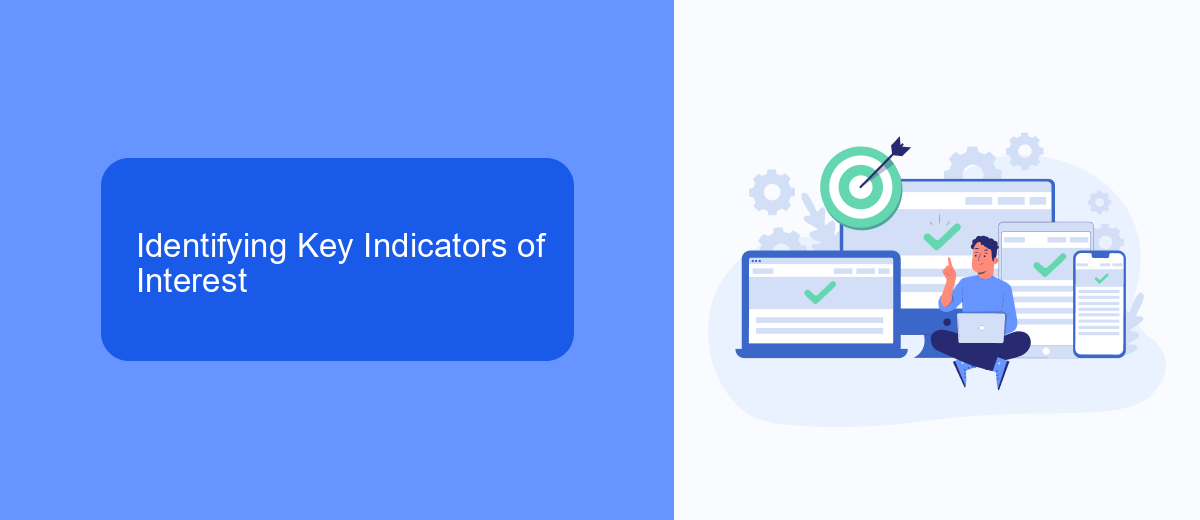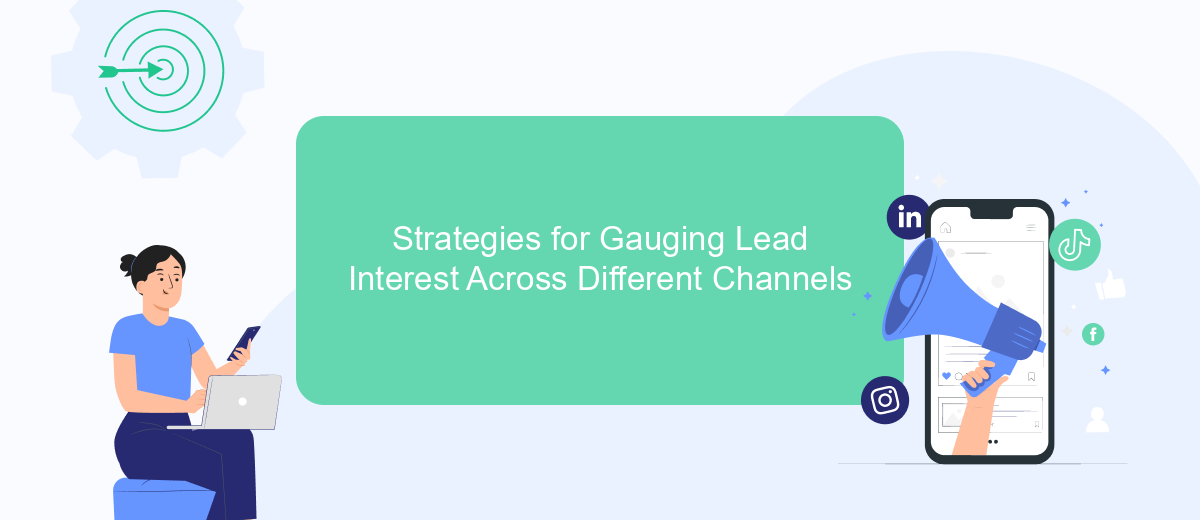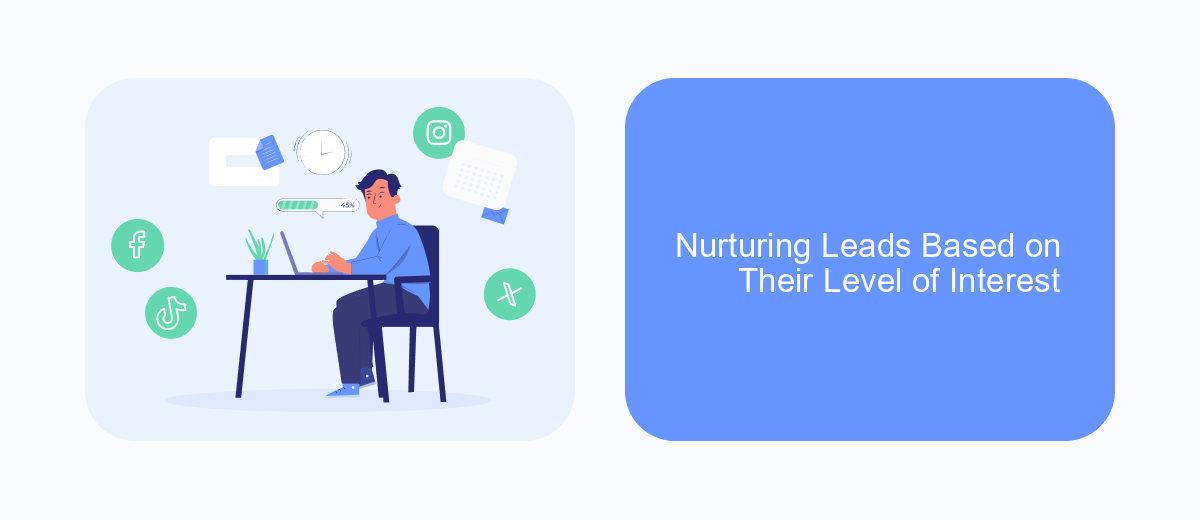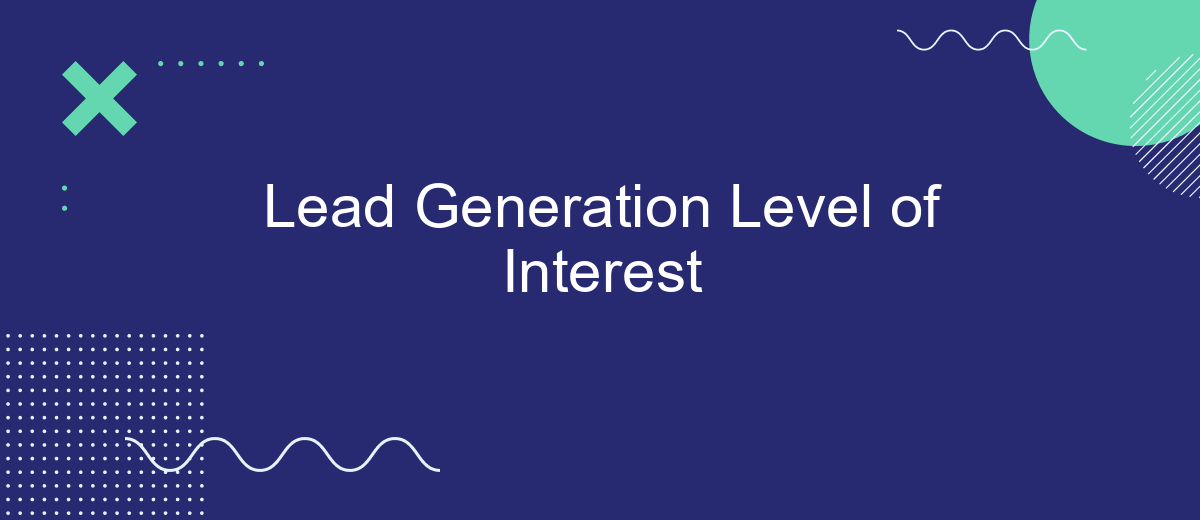Lead generation is a crucial component of any successful marketing strategy, acting as the initial step in converting potential customers into loyal clients. Understanding the level of interest among leads can significantly enhance targeting efforts and improve conversion rates. This article delves into the nuances of gauging lead interest, offering insights and strategies to optimize your approach and maximize your marketing ROI.
Understanding Lead Generation and Levels of Interest
Lead generation is a crucial aspect of modern marketing, focusing on attracting and converting prospects into potential customers. It involves identifying and nurturing individuals who have shown interest in a company's products or services. The process typically includes various strategies, such as content marketing, social media engagement, and targeted advertising, all aimed at capturing the attention of potential leads.
- Awareness: At this stage, individuals become aware of a product or service but may not have a specific interest yet.
- Interest: Prospects express a genuine interest in learning more about the offerings and how they can meet their needs.
- Consideration: Potential leads evaluate the product or service, comparing it with alternatives to determine its suitability.
- Decision: The final stage where leads decide whether to make a purchase or engage further with the company.
Understanding these levels of interest is essential for businesses to tailor their marketing strategies effectively. By recognizing where a prospect stands in the lead generation funnel, companies can provide targeted content and engagement that aligns with the prospect's needs, ultimately increasing the likelihood of conversion and fostering long-term customer relationships.
Identifying Key Indicators of Interest

Identifying key indicators of interest is crucial for effective lead generation. One primary indicator is engagement level, which can be measured through metrics such as email open rates, click-through rates, and time spent on website pages. High engagement often signifies a genuine interest in your product or service. Additionally, tracking social media interactions, such as likes, comments, and shares, can provide insights into potential leads' interests. These metrics help businesses tailor their marketing strategies to target audiences more effectively, ensuring that the content resonates with their interests and needs.
Another essential aspect is the integration of data from various platforms to gain a comprehensive view of lead behavior. Services like SaveMyLeads facilitate seamless integration by automating data transfer from different sources into a unified system. This allows businesses to monitor lead activity in real-time and identify patterns that indicate a higher level of interest. By leveraging these integrations, companies can prioritize leads that show strong indicators of interest, enhancing their conversion rates and optimizing their marketing efforts.
Strategies for Gauging Lead Interest Across Different Channels

Effectively gauging lead interest across various channels is crucial for optimizing lead generation strategies. Understanding the level of interest can help businesses tailor their communication and improve conversion rates. Different channels offer unique opportunities to assess lead engagement and interest.
- Email Marketing: Track open rates, click-through rates, and time spent on emails to measure interest. Personalized content and follow-up emails can further gauge engagement.
- Social Media: Analyze likes, shares, comments, and direct messages to understand lead interaction. Social listening tools can also provide insights into sentiment and interest levels.
- Website Analytics: Use tools like Google Analytics to monitor page views, session duration, and bounce rates. Heatmaps and user journey tracking can reveal areas of interest.
- Webinars and Events: Attendance rates, participation in Q&A sessions, and post-event surveys can provide valuable feedback on lead interest.
- Paid Advertising: Evaluate click-through rates, conversion rates, and engagement metrics to assess the effectiveness of ad campaigns in capturing lead interest.
By leveraging these strategies, businesses can better understand their leads' preferences and tailor their marketing efforts accordingly. This targeted approach not only enhances lead engagement but also increases the likelihood of successful conversions.
Nurturing Leads Based on Their Level of Interest

Effectively nurturing leads requires a nuanced approach, especially when considering their varying levels of interest. Recognizing these differences allows businesses to tailor their strategies, ensuring that each lead receives the appropriate attention and information. By doing so, companies can enhance engagement and conversion rates.
One of the first steps in nurturing leads is to categorize them based on their expressed interest. This can be achieved through careful analysis of their interactions with your brand, such as website visits, email opens, and social media engagement. Once categorized, leads can be nurtured with targeted content that aligns with their specific interests and needs.
- High-interest leads: Provide them with detailed product information and personalized offers.
- Moderate-interest leads: Share educational content and case studies to build trust and interest.
- Low-interest leads: Use general awareness campaigns to gradually increase their interest.
By adopting a segmented nurturing approach, businesses can optimize their lead generation efforts. This ensures that resources are allocated efficiently, focusing on leads with higher potential while gradually warming up those with less initial interest. Ultimately, this targeted nurturing strategy can lead to higher conversion rates and improved customer relationships.
Measuring and Analyzing Lead Interest for Optimization
Effectively measuring and analyzing lead interest is crucial for optimizing lead generation strategies. Begin by implementing tracking mechanisms such as UTM parameters and conversion tracking to gather data on how leads interact with your content. This data helps identify which channels and content types generate the most interest. Utilize tools like Google Analytics to monitor metrics such as click-through rates, bounce rates, and conversion rates, providing insights into lead behavior and engagement levels.
To further enhance your analysis, consider integrating automation tools like SaveMyLeads, which streamline data collection and analysis. SaveMyLeads can automatically sync lead data from various platforms, allowing for a centralized view of lead interactions. This integration facilitates more accurate and timely analysis, enabling you to make data-driven decisions to optimize your lead generation efforts. By continuously measuring and analyzing lead interest, you can refine your strategies to focus on the most effective channels and content, ultimately improving conversion rates and maximizing return on investment.
FAQ
What is lead generation level of interest?
How can I assess the level of interest of a lead?
Why is it important to understand the level of interest in lead generation?
How can automation help in managing leads based on their interest level?
What are some common mistakes when evaluating lead interest levels?
Are you using Facebook Lead Ads? Then you will surely appreciate our service. The SaveMyLeads online connector is a simple and affordable tool that anyone can use to set up integrations for Facebook. Please note that you do not need to code or learn special technologies. Just register on our website and create the necessary integration through the web interface. Connect your advertising account with various services and applications. Integrations are configured in just 5-10 minutes, and in the long run they will save you an impressive amount of time.
